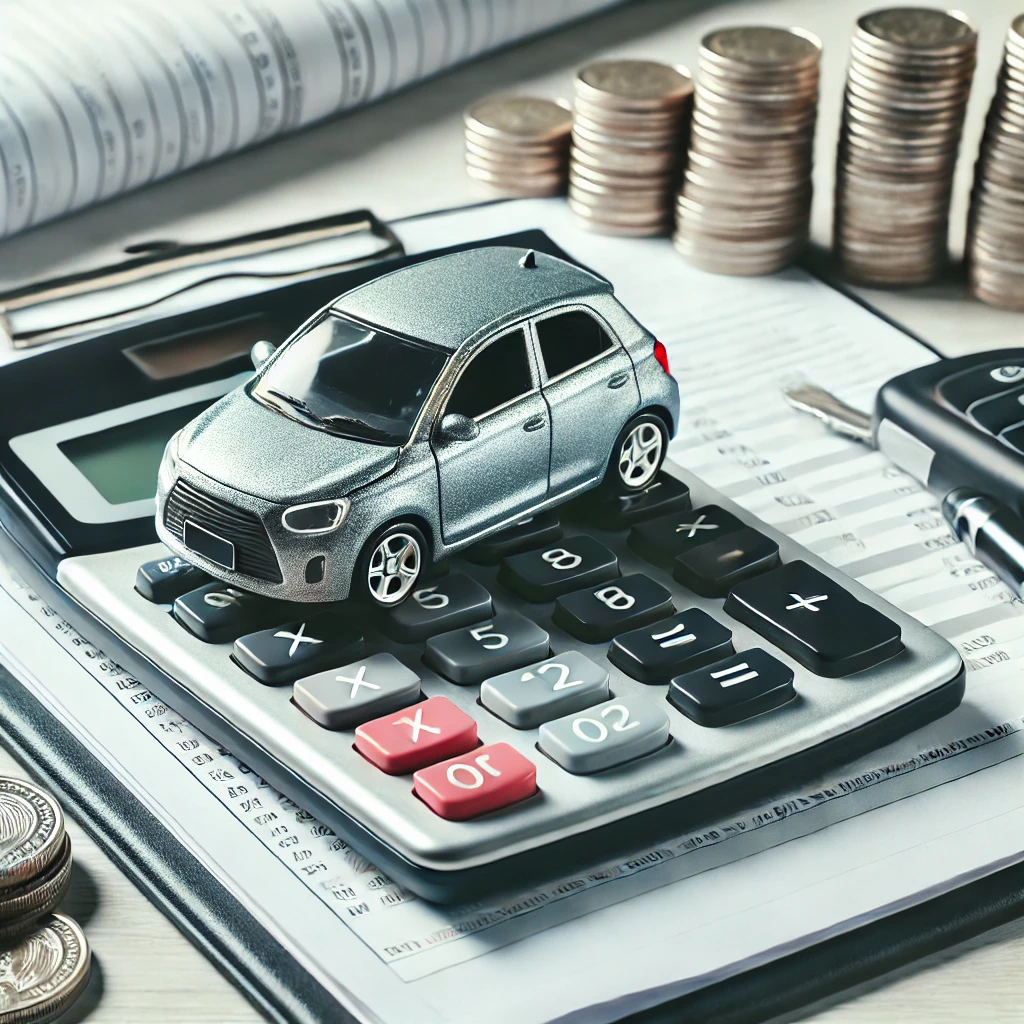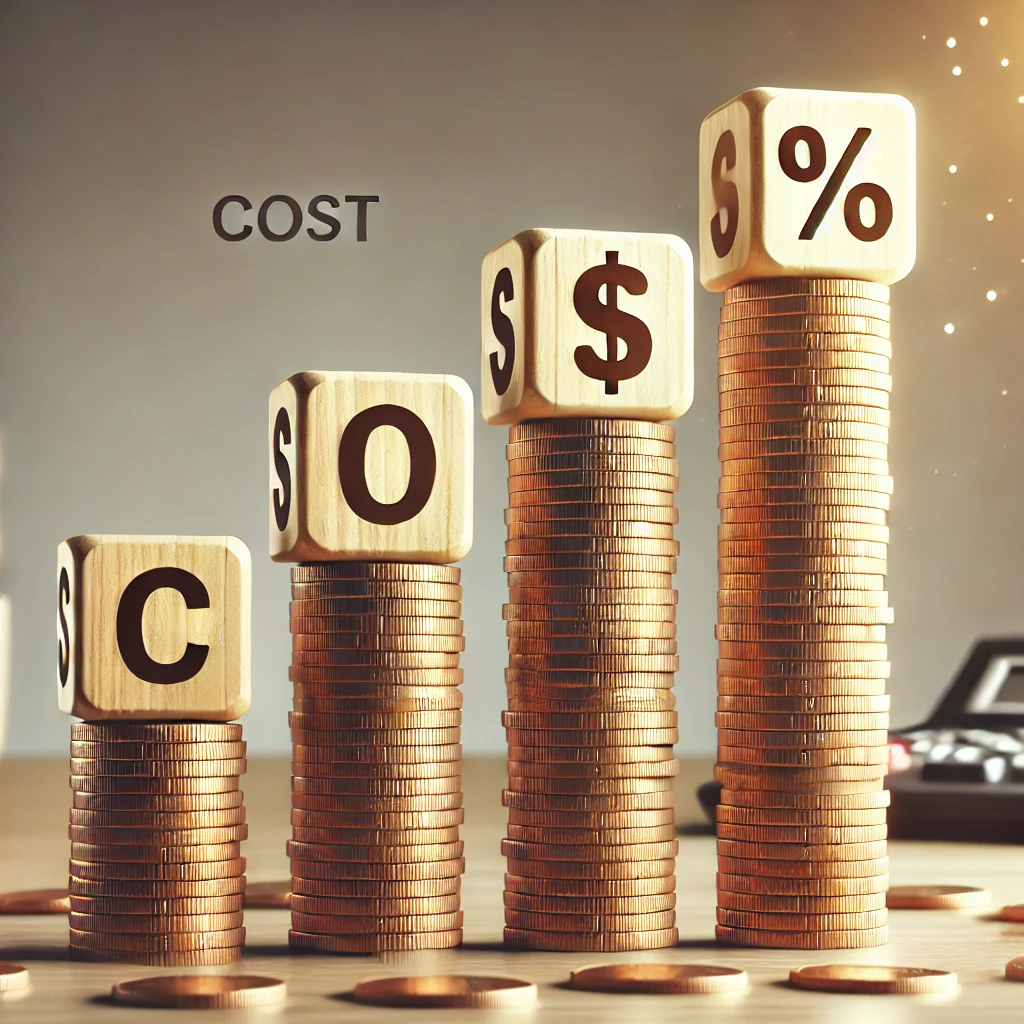
Financing a new car can be a convenient way to drive off the lot in a vehicle without immediately depleting your bank account. But, while the sticker price might seem manageable, the reality of car financing often involves paying far more than that initial figure. Many buyers are surprised to find that the total cost of ownership – once interest, fees, and additional costs are accounted for – significantly exceeds the sticker price.
This article explores why financing a car typically costs more than anticipated. We’ll cover interest rates, loan fees, insurance costs, and more, breaking down each cost factor in detail. We’ll also discuss tips and strategies to help you save money on your next car loan, allowing you to make more informed decisions and avoid unexpected expenses.
Table of Contents
- Understanding Car Financing Basics
- How Interest Rates Work on Car Loans
- Common Fees in Car Financing
- The Impact of Loan Term on Total Cost
- The True Cost of Ownership
- Tips to Minimize Financing Costs
- Frequently Asked Questions (FAQs) about Car Financing
1. Understanding Car Financing Basics

Car Financing Overview
When you finance a car, you’re borrowing money from a lender, such as a bank, credit union, or dealership. In exchange, you agree to pay back the borrowed amount over a set period with interest. While financing allows for manageable monthly payments, it also means that you’ll pay more than the initial price.
The Sticker Price vs. Total Cost
The sticker price represents the vehicle’s base price, excluding any financing or ownership costs. The total cost includes interest, fees, taxes, insurance, and maintenance expenses. For a $30,000 car, the sticker price may be your starting point, but it’s rarely the amount you end up paying after five or six years of financing.
Financing Terminology to Know
- Principal: The amount you borrow to purchase the car.
- Interest Rate: The cost of borrowing, expressed as a percentage.
- Loan Term: The period over which you agree to pay back the loan.
- APR (Annual Percentage Rate): The total interest you’ll pay over a year, including fees.
2. How Interest Rates Work on Car Loans

Understanding Car Loan Interest
Interest is the fee for borrowing money, and it’s a significant component of any financed purchase. The interest rate you receive on your car loan depends on factors like your credit score, the loan term, and economic conditions. Higher interest rates or extended loan terms increase the total interest paid over time.
Types of Interest Rates
- Fixed Interest Rates: The rate remains the same throughout the loan term, making monthly payments predictable.
- Variable Interest Rates: The rate can change based on market conditions, potentially increasing or decreasing your payment over time.
How Interest Adds Up
To illustrate, if you finance a $25,000 car at a 5% interest rate for 60 months, you’ll pay approximately $2,645 in interest over the loan term. At a 6% rate, the total interest increases to about $3,000. Extending the loan to 72 months raises the interest further, as you’re borrowing the money for a longer period.
3. Common Fees in Car Financing
Origination Fees
Many lenders charge an origination fee for processing the loan. This fee, usually around 1-2% of the loan amount, is often included in the loan balance, meaning you’ll pay interest on it. For a $25,000 loan, a 2% origination fee adds $500, plus the interest accrued on that amount.
Dealership Fees
Dealerships may charge fees for documentation, administrative tasks, or transportation. These fees vary widely, but they’re often non-negotiable and can add several hundred dollars to the purchase.
Sales Tax
In most states, sales tax is applied to the purchase price. The rate varies by location but typically ranges from 6% to 9%, adding $1,500 to $2,700 on a $30,000 car.
Insurance and Extended Warranties
Dealerships often suggest adding an extended warranty or specific insurance policies like GAP (Guaranteed Asset Protection) insurance. These add-ons, though beneficial, increase the loan balance, meaning you’ll pay interest on them if they’re included in the financing.

4. The Impact of Loan Term on Total Cost
Short-Term vs. Long-Term Loans
A common misconception is that choosing a longer-term loan is financially beneficial because it results in lower monthly payments. However, extending the term also means paying more interest over time. A 3-year loan on a $30,000 car at 4% interest results in around $1,875 in total interest, while a 6-year loan on the same amount and rate totals nearly $3,800 in interest.
Calculating the Total Interest
Loan calculators can help you understand how much interest you’ll pay over different terms. It’s wise to compare the long-term savings of a shorter loan versus the immediate benefit of a lower monthly payment.
5. The True Cost of Ownership
Beyond Financing: The Full Picture
Owning a car is more than just paying off the loan. Maintenance, insurance, and fuel all contribute to the total cost of ownership. According to AAA, the average cost of owning and operating a car is about $9,000 per year, depending on the make, model, and mileage driven.
Insurance Costs
Most lenders require full insurance coverage on a financed car. Comprehensive insurance premiums vary by state, driving history, and car type, averaging around $1,000 to $2,000 per year.
Depreciation
Cars lose value over time, with some models depreciating faster than others. The typical car loses around 20% of its value in the first year, which affects resale value and can make trading in or selling the car for a high price challenging.
Fuel and Maintenance
Gasoline costs fluctuate, while maintenance expenses depend on the car model and frequency of use. Basic maintenance, like oil changes and tire replacements, can add up to $500 to $1,500 annually.
6. Tips to Minimize Financing Costs
Shop Around for Interest Rates
Comparing rates from multiple lenders can save you a considerable amount of money. Banks, credit unions, and online lenders often have different rates, and pre-approval can give you leverage when negotiating.
Consider a Larger Down Payment
A larger down payment reduces the loan amount, lowering both the principal and the interest paid. Aim for at least 20% of the car’s price as a down payment to reduce long-term costs.
Look for Dealer Incentives
Dealerships often offer financing incentives, such as 0% interest for qualified buyers. While these deals can save on interest, they typically require excellent credit.
Negotiate the “Out-the-Door” Price
Instead of focusing only on the monthly payment, negotiate the out-the-door price, which includes taxes, fees, and other costs. Knowing this final amount helps you better understand the total loan cost and avoid unexpected expenses.
Consider Shorter Loan Terms
While a 60-month or 72-month loan may reduce the monthly payment, a shorter term of 36 or 48 months will save you money on interest. Choose the shortest loan term that fits your budget.
Avoid Unnecessary Add-Ons
Dealerships offer numerous add-ons like extended warranties, paint protection, and tire insurance. These can increase the financed amount and add to your total interest. Consider purchasing these add-ons separately or skipping them entirely.

7. Frequently Asked Questions (FAQs) about Car Financing
1. Can I Pay Off My Car Loan Early to Save on Interest?
Yes, many lenders allow early payment with no penalty. Paying off a loan early can reduce interest costs, though it’s essential to check your loan terms for any fees.
2. How Much Should I Budget for Maintenance on a New Car?
Maintenance costs vary, but budgeting around $500 to $1,500 annually for routine maintenance is a safe estimate. Some cars have free maintenance packages for a few years, which can help reduce expenses.
3. Is It Better to Lease or Finance a New Car?
Leasing often has lower monthly payments, but financing allows you to own the vehicle outright after the loan term. Leasing is suitable for those who prefer driving new cars frequently, while financing may be more cost-effective long-term.
4. Can I Refinance My Car Loan?
Yes, refinancing can be a smart option if you qualify for a lower interest rate, which can reduce monthly payments or shorten the loan term. However, there may be fees involved, so weigh the cost-benefit.
5. Do Dealerships Offer the Best Financing Options?
Dealership financing can be convenient, but it’s wise to shop around and compare offers. Sometimes, banks or credit unions provide better rates than dealership lenders.

Financing a new car can make ownership more accessible, but the final cost is often much higher than the sticker price due to interest, fees, and maintenance. By understanding these hidden costs, you can make smarter decisions, negotiate effectively, and find the best loan terms.
When financing, remember that focusing solely on monthly payments can be misleading. Instead, look at the big picture, including total interest paid and additional fees. With the right approach, you can minimize these extra costs and enjoy your new car without financial regret.
Visit our other website: https://synergypublish.com
